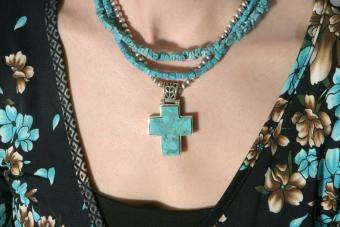
Understanding gold karats and what they mean for your jewelry is important, and you should learn all about them before investing in any new pieces. The karat of an item helps define its quality and value; therefore, knowing a little about how different golds are formed and what that means for their worth can give a useful insight when you're planning a jewelry purchase.
What Is a Gold Karat?
Most gold that is used for jewelry purposes is, in fact, a gold alloy meaning that pure gold is mixed with other metals such as copper, silver, or palladium since gold is too soft to withstand the daily beating of constant wear. Karats describe the degree of purity in a gold piece and are fractional measurements out of 24 - 24 karat referring to pure gold or 24 parts gold.
There are many karat variations, with jewelers in different countries having their particular favorite gold karat to work with, but the most common gold karats used in contemporary jewelry are:
- 22 karat (22 parts gold, 2 parts other metal)
- 18 karat (18 parts gold, 6 parts other metal)
- 14 karat (14 parts gold, 10 parts other metal)
- 10 karat (10 parts gold, 14 parts other metal)

What Is the Purpose of Mixing Metals?
There are two primary reasons that jewelers mixing gold with other metals: hardness and cost. These variations in karat amount help keep the market variable and accessible to people of all types of economic levels and lifestyles.
Hardness
Pure gold is an extremely soft metal and will knock and scratch very easily. This makes it impractical for daily wear, but by mixing the pure gold with a harder metal, the material becomes much more suitable for the rings, necklaces, and bracelets that are subjected to the rigors of daily life. Gold that's been mixed with other metals is also less susceptible to wearing down as quickly as pure gold; This sustainability makes it a much more practical choice for all types of jewelry and jewelry wearers.
Cost
By mixing pure gold with other, less costly metals, the price of the raw materials comes down. This is reflected in the prices of gold pieces. A 10 karat ring, for instance, will cost significantly less than the 18 karat version. Here are the cost variations for each karat amount of gold per gram as of May 2021.
- 24K - $57.54
- 22K - $52.74
- 21K - $50.34
- 18K - $43.14
- 14K - $33.57
- 12K - $28.77
- 10K - $23.97
Identifying Karat
All jewelry with authentic metals should be stamped to indicate to the buyer what karat of gold has been used, and these maker's marks must be clearly visible. This stamp will indicate the karat either by number, for example 14 karat or 14k, by a three-digit figure which represents the parts of gold per thousand, or as a percentage of purity. It's very important to know all three marks for each karat measurement since there's not a universal mark, and different jewelers favor different marks. For clarity's sake, here's a quick guide to each of these different marking styles for you to use:
- 24K = 999 = 99.9%
- 22K = 916 = 91.6%
- 20K = 833 = 83.3%
- 18K = 750 = 75%
- 14K = 585 = 58.5%
- 12K = 500 = 50%
- 10K = 417 = 41.7%
- 9K = 375 = 37.5%
Karat and Color
The introduction of other metals into gold also introduces different colors to the standard yellow gold color, and the ratio of these different metals present in each mixture can create differing hues and shades of more standard colors like rose, pink, and red. Typical colors of gold and the metals that create them are:
- White Gold - Palladium, silver, nickel
- Rose Gold - Copper
- Green Gold - Silver

Karat Amounts and Metal Allergies
If you have a 'gold' allergy, there's a high chance that you're not actually allergic to gold but rather to the other metals combined with it in the jewelry that you've reacted to in the past. An easy way to test this is to purchase pure or nearly pure gold and see if you have a reaction; if not, then you know that you're reactive to another type of metal like nickel or copper. Likewise, the annoying light patina that is left on the skin when wearing low karat golds will also disappear when wearing higher quality golds.
The Choice of Karat
When buying jewelry, the choice of karat is a very personal thing. This will largely be dictated by your budget; however, there are also other considerations. Lower karat golds are excellent choices for jewelry that you intend to wear every day, while higher karat weights are better reserved for jewelry you wear on special occasions. Many artisan jewelers also work in lower karat gold, therefore oftentimes more unusual jewelry designs can be found in these impure karat categories.
Consider Karat Weight When Purchasing Jewelry
While the jewelry industry encourages consumers to focus on the color and cuts of their gemstones, paying attention to the metals of the jewelry you're wearing is just as, if not more so, important than knowing the precise weight and hue of your gemstones. Make sure to take a holistic approach to buying jewelry and don't forget to consider karat weight the next time you look at a beautiful gold piece of jewelry in a counter's display.







